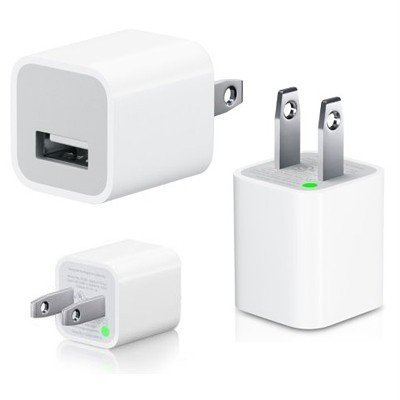StayingSustainable.com
iPhone / iPad / USB Chargers
When you look at an iPhone or iPad charger, you realize that they use USB ports to charge. USB ports are used to charge a number of different appliances. A USB charger typically provides a 5V charge. The amperage of a USB charger can vary from around .5A to 2.1A. The higher the amperage the quicker the charge. DO NOT TAKE THAT TO MEAN THAT IT IS OKAY TO CHARGE YOUR APPLIANCE AT VOLTAGES OR AMPERAGES HIGHER THAN THEY ARE RATED!!!
Charging an appliance above the rated tolerances can have disasterous consequences. Also, the faster your battery reaches its maximum charge, the faster it releases it. So there is little benefit to going too high. The main benefit is when charging a larger battery, such as an iPad, you don't have to wait all day to charge it.

So then, if you are wanting to charge your iPhone or iPad with a solar panel, you would need to size and design your panel to provide around 5V at somewhere between .5A - 2A. There are a number of different ways to achieve these specifications, because solar cells come in many different voltage and amperage combinations. It will also be benificial to understand how connecting your cells in series and parallel will affect the supply provided by your panel, so check out that informational article.
Before you move on though, there is another important thing to understand about USB charging ports. Have you ever plugged into a USB port that doesn't seem to charge your iPhone, but it gets a charge anyway? Well, if you look at the back of your wall connection for your iPhone charger, it says on there that the output is 5V at 1A. As we said eariler, some USB ports only put out .5A. Your iPhone, while being used, requires more than .5A in order to light up the screen and operate, so when you have it on, it discharges faster than it charges. That's why you don't see that it is charging. If you don't touch it though, you can look back at your percentage and see that your phone has infact taken a charge. So, you would be best to design a solar panel to provide at least 1A if that is what you intend to do with it.